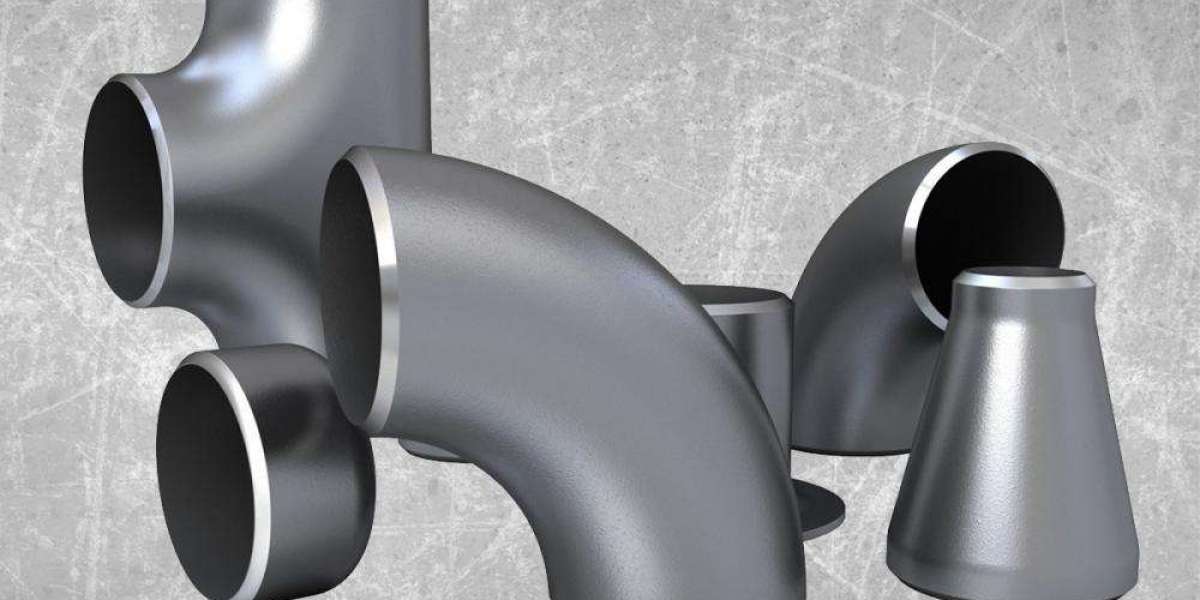Alloy steel buttweld fittings are critical components in many industrial applications due to their superior strength, durability, and resistance to extreme conditions. These fittings are designed to connect pipes seamlessly, ensuring a leak-proof and robust flow of materials within a piping system. In this blog, we will provide an overview of alloy steel butt weld fittings, their types, and their various applications.
What Are Alloy Steel ButtWeld Fittings?
Alloy steel buttweld fittings are made from alloy steel, which is steel alloyed with various elements (such as chromium, nickel, and molybdenum) to improve its mechanical properties. These fittings are designed to be welded onto the ends of pipes, creating a seamless and high-strength connection capable of handling high pressure and temperature.
Types of Alloy Steel Butt Weld Fittings
1. Alloy Steel Elbows
90-Degree Elbow
A 90-degree elbow changes the direction of the piping by 90 degrees, making it suitable for tight spaces and changes in the flow direction.
45-Degree Elbow
A 45-degree elbow changes the direction of the piping by 45 degrees, allowing for smoother transitions in the pipeline.
2. Alloy Steel Tees
Equal Tee
An equal tee has three outlets of the same size, used for branching off a main pipeline.
Reducing Tee
A reducing tee has one outlet smaller than the other two, allowing for the connection of pipes with different diameters.
3. Alloy Steel Reducers
Concentric Reducer
A concentric reducer joins pipes of different diameters while maintaining the centerline of the pipe.
Eccentric Reducer
An eccentric reducer joins pipes of different diameters with the edge of the smaller pipe in line with the larger pipe, preventing air accumulation.
4. Alloy Steel Caps
Caps are used to seal the ends of pipes, providing protection and preventing the flow of materials.
5. Alloy Steel Cross
A cross fitting has one inlet and three outlets, used to split the flow in four directions.
6. Alloy Steel Stub Ends
Stub ends are used with lap joint flanges for pipelines that require frequent disassembly.
Applications of Alloy Steel Butt Weld Fittings
Oil and Gas Industry
Alloy steel butt weld fittings are widely used in the oil and gas industry for their ability to withstand high pressures, high temperatures, and corrosive environments.
Chemical Industry
These fittings are crucial in the chemical industry due to their resistance to various chemicals and ability to maintain integrity under extreme conditions.
Power Generation
In power plants, alloy steel butt weld fittings are used due to their strength and durability, making them suitable for high-pressure and high-temperature applications.
Water Treatment Plants
The corrosion resistance of alloy steel butt weld fittings makes them ideal for use in water treatment facilities, ensuring long-lasting and reliable performance.
Construction
In the construction industry, these fittings are used in HVAC systems, plumbing, and fire protection systems, providing robust and secure connections.
Food and Beverage Industry
Alloy steel butt weld fittings are also used in the food and beverage industry for their hygienic properties and resistance to various cleaning agents.
Conclusion
Alloy steel butt weld fittings play a crucial role in numerous industries, providing reliable and durable connections in piping systems. Their resistance to corrosion, high strength, and ability to withstand extreme conditions make them a preferred choice for a wide range of applications.








